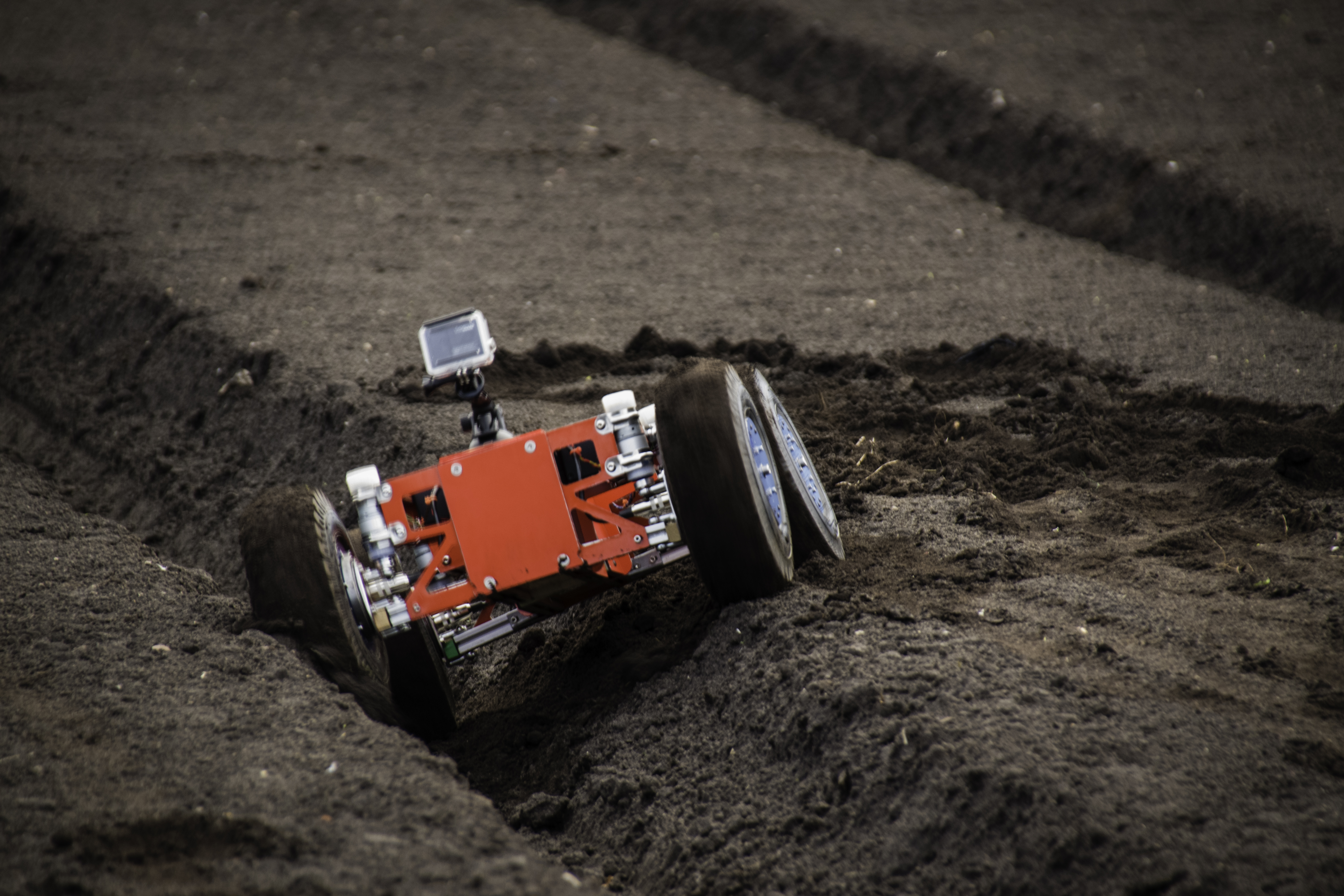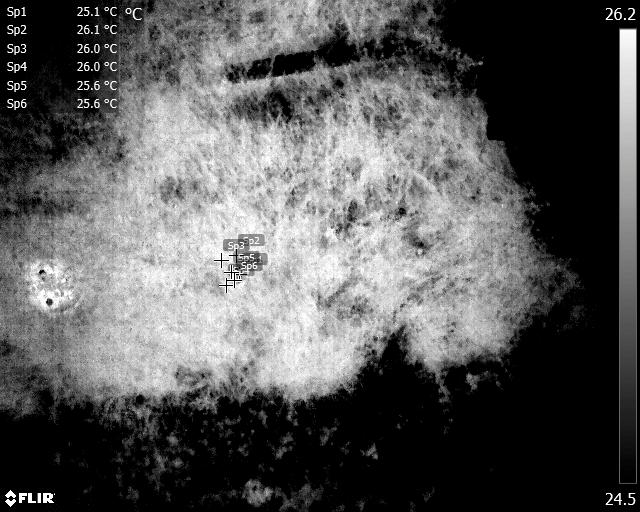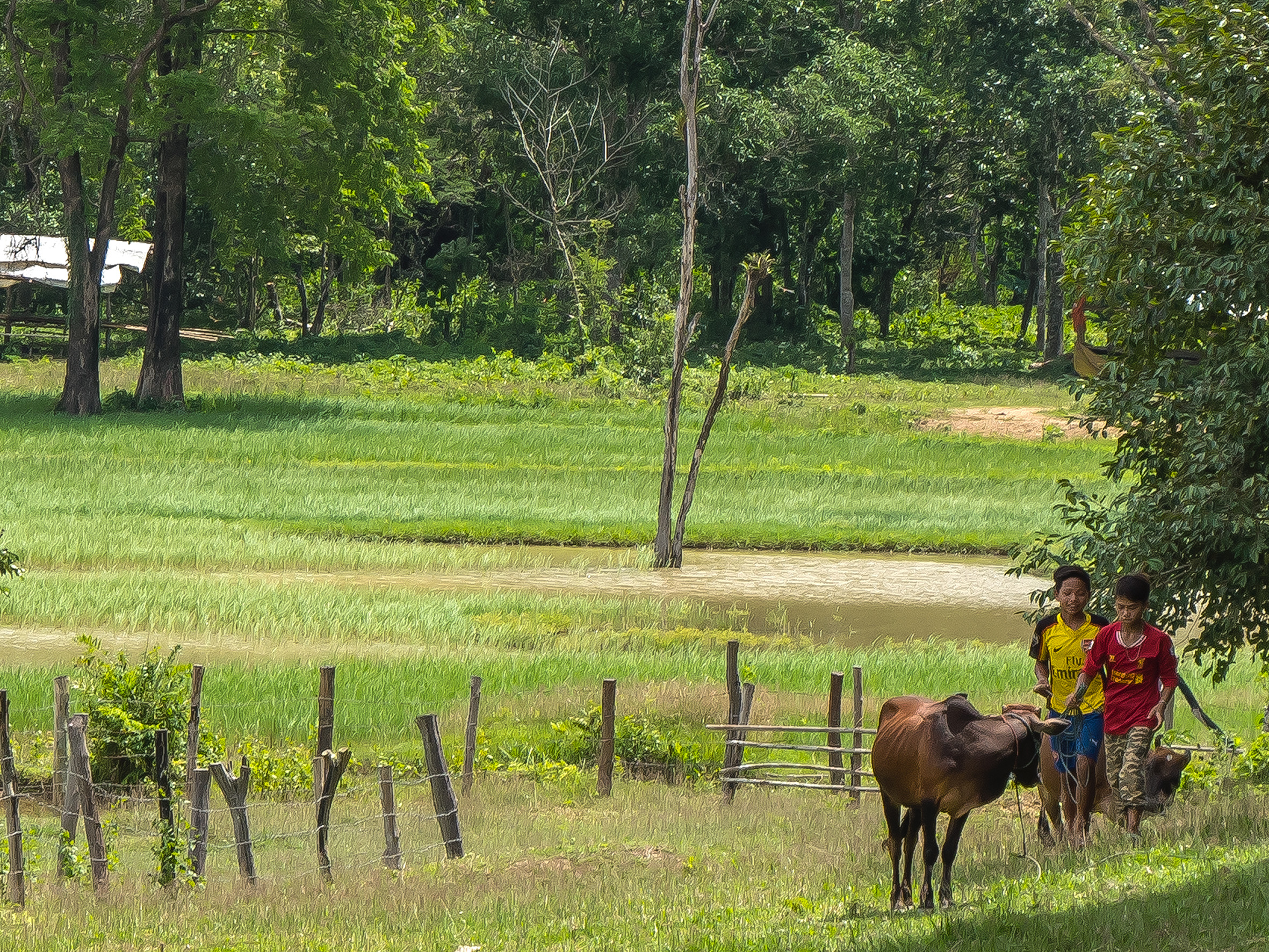With an estimated 110 million active land mines around the world today, the team led by the Science and Technology Facilities Council's RAL Space and which includes engineers from Cranfield University and Fardoulis Robotics, aim to use their space know-how in exploring the problem and offering potential solutions. Funded by the UK's Global Challenge Research Fund the team are looking at the potential to develop existing drones, robotics systems and sensors to help with safer landmine surveying.
Landmines and other remnants of war continue to rob people of their lives and livelihoods. Lurking explosives can block the delivery of humanitarian assistance, stop children from going to school or farmers working on land, hampering reconstruction and reconciliation efforts.
Space technology has been developed specifically to operate in remote and harsh conditions while sending important data back to humans safely on Earth. Rovers like ESA's Exomars rover have been developed to autonomously navigate the surface of Mars and collect and analyse samples. Meanwhile some planetary exploration and Earth observation satellites carry instruments on board which can detect trace chemicals in the ground.
 Dr Rain Irshad, the autonomous systems group leader at RAL Space said, “We know we have versatile, cutting-edge technology and, alongside our partners, we have the heritage and expertise to adapt this technology for new uses. What we don't know is exactly how best to help landmine clearance teams who do this day in and day out."
Dr Rain Irshad, the autonomous systems group leader at RAL Space said, “We know we have versatile, cutting-edge technology and, alongside our partners, we have the heritage and expertise to adapt this technology for new uses. What we don't know is exactly how best to help landmine clearance teams who do this day in and day out."
The team hope that in collaboration with mine detection experts, these capabilities can be adapted into tools for more efficient and safer surveys of areas contaminated by landmines and explosive remnants of war (ERW).
To find this out the team will be working over the next year to establish partnerships with national authorities and NGOs to understand fully the requirements for land mine clearance in the field.
In Cambodia, Vietnam and Laos, landmines and explosive remnants still contaminate many thousands of square kilometres of land following conflicts in the 1960s. As the population in these areas has increased dangerous land is needed more and more as pressure on food production, housing, water and other resources grows.
The team are also looking to work with local government, universities and industry in these countries, as well as international non-governmental organisations to fully understand the challenges of clearing explosives in order to work together on real solutions.
John Fardoulis from Fardoulis Robotics said, “I'm pleased to be part of a team of specialists in space technology and robotics, working toward humanitarian goals aimed at helping people in places where the devastating effects of landmines and ERW are still felt today."
Prof Nabil Aouf, Head of the Signals and Autonomy Group at Cranfield University said, “Our expertise in intelligent sensing and autonomous systems linked to ground and aerial robotics complements the expertises of our partners in this program. The interaction with the end users from a number of third world countries dealing with landmines, will help us identify all technical requirements to develop new autonomous landmine detection vehicles capable of contributing well in this type of Humanitarian application ."


Images
Top: RAL Space's medium size, low cost rugged instrumentation platform with advanced mobility capabilities making it the perfect low cost starting point from which to tailor a mine and ERW surveying platform.Credit: STFC RAL Space/ Steven Kay
Bottom left: UAV thermal imaging of some landmines in long grass. Credit: John Fardoulis
Bottom right: Teams using manual detection techniques in Laos require a medic as part of the team due to the hazardous nature of such work. Credit: John Fardoulis
About the project partners:
Global Challenge Research Fund
The Global Challenges Research Fund (GCRF) is a 5-year £1.5Bn fund and a key component in the delivery of the UK Aid Strategy: tackling global challenges in the national interest. The fund aims to ensure that UK research takes a leading role in addressing the problems faced by developing countries through:
- challenge-led disciplinary and interdisciplinary research
- strengthening capacity for research and innovation within both the UK and developing countries
- providing an agile response to emergencies where there is an urgent research need.
The Global Challenges Research Fund is an initiative led by the Department for Business, Energy and Industrial Strategy (BEIS) which operates across a number of delivery partners, including the UK Research Councils, UK Higher Education Funding bodies, the Academy of Medical Sciences, Royal Society, British Academy, the Royal Academy of Engineering and UK Space Agency.
STFC RAL Space
RAL Space is an integral part of the Science and Technology Facilities Council's (STFC) Rutherford Appleton Laboratory (RAL). RAL Space carries out world-class space research and technology development with involvement in over 210 space missions. Its Autonomous Systems Group (ASG) are comprised of a unique team of multidisciplinary engineers with expertise in space systems design, mechanical and electronics engineering as well as planning and conducting robotic operations in hazardous and challenging locations. This group brings a diverse range of technical skills that are key to the success of robotics-oriented projects and have a proven track record at delivering robust and reliable robotic platforms for hazardous and challenging environments. The group can support the full development cycle of robotics solutions including supporting and participating in international engagement projects, which they have previously effected through several successful NEWTON and IPSP agri-tech oriented projects.
Fardoulis Robotics
John Fardoulis of Fardoulis Robotics has extensive experience in using aerial robotics for mapping hazardous environments. As a contract researcher at the University of Bristol for the last 2 years he was involved in a Find a Better Way funded project, investigating how unmanned aerial vehicles (UAV – a.k.a. drones) can assist in humanitarian mine action and ERW survey. This work has led to gaining a deep understanding of how the mine action sector functions and a broad range of specialist contacts within the field. Two workshops were staged during this period for INGOs activity involved in landmine clearance, providing two-way knowledge transfer regarding requirements and potential impact from aerial robotics in mine action. Prior to that he worked on a drone radiation mapping project at the University of Bristol, conducting fieldwork in radioactively contaminated areas near Fukushima in Japan, at a retired uranium mine in Cornwall and on Europe's largest nuclear waste processing site, Sellafield in Cumbria, UK.
Cranfield University
The Signals and Autonomy group of the Centre for Electronic Warfare Information and Cyber (CEWIC) of Cranfield Defence and Security, has a strong background in Autonomous Systems research. The group's track record includes funding from the European FP7 scheme on UAV autonomous navigation and decision planning, from EPSRC for multiple Unmanned Ground Vehicles (UGC) guidance, from ESA under the Exomars programme for mapping techniques for the mars rover and from EPSRC for cooperative navigation of multiple UAVs. This has mainly been for defence and security applications. As a member of the CEWIC, the group are also funded for project “Determine" of the “Find a Better Way" programme that aims at developing new configurations for low-cost, fast and efficient ground penetrating radars (GPR) for landmine detection.
For more information please contact: RAL Space Enquiries
